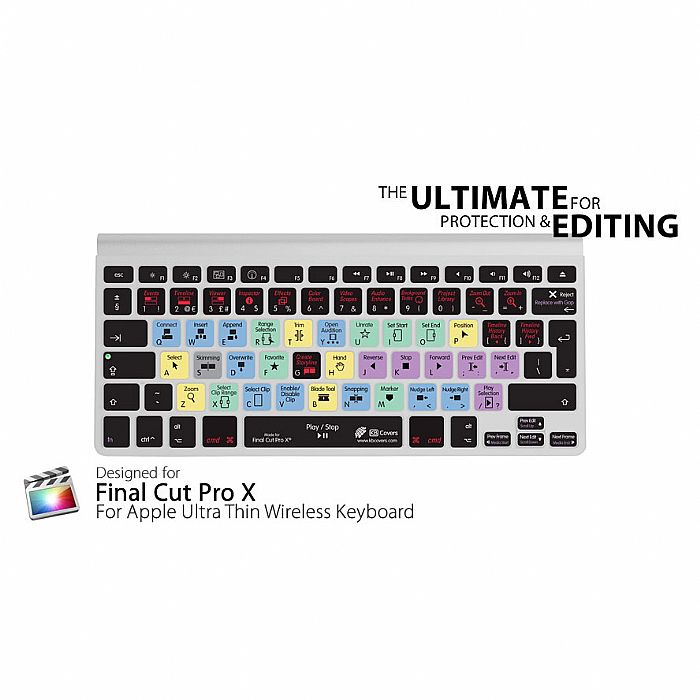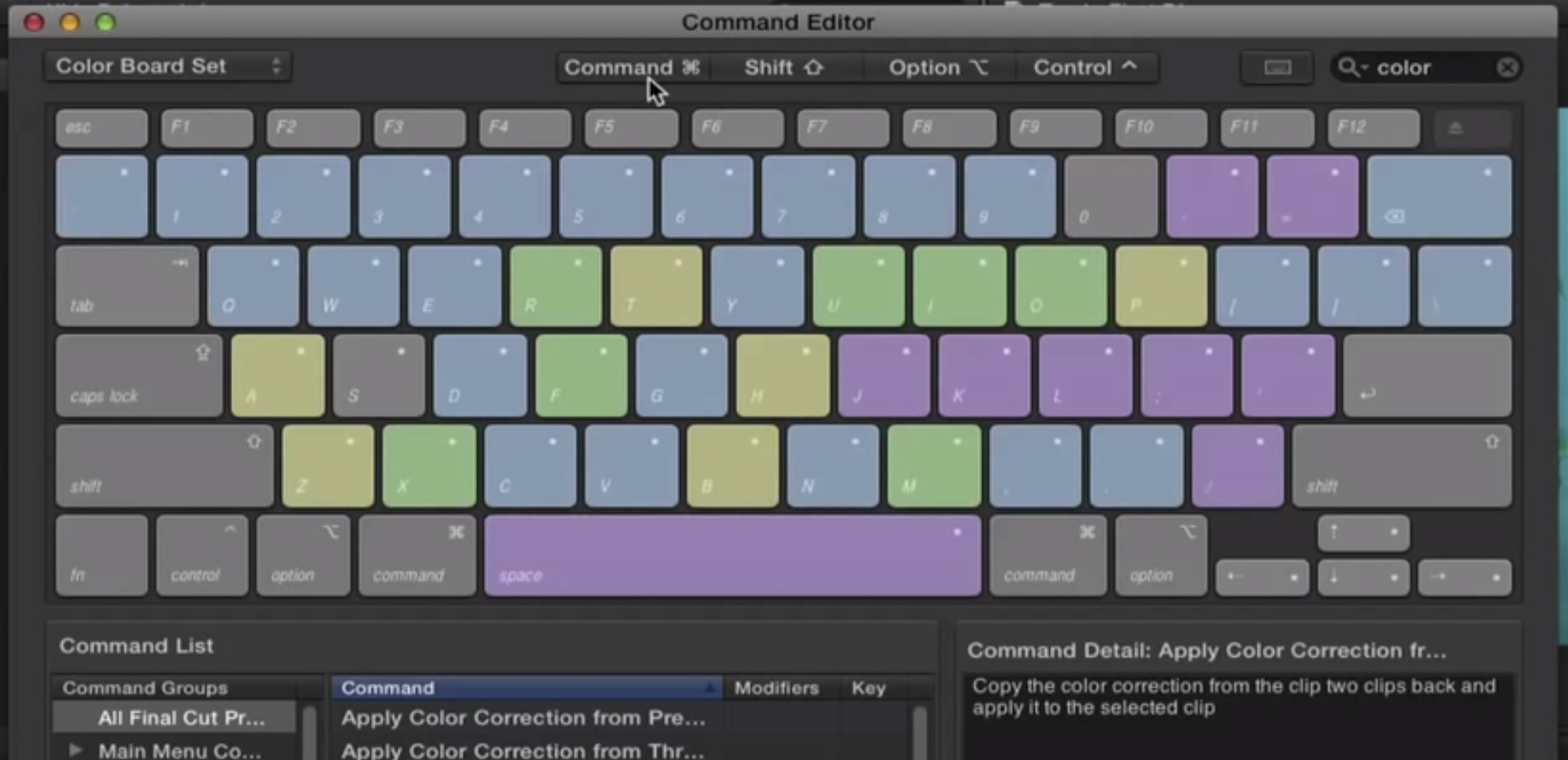
(You can’t delete a command or shortcut using the Command list.)įinally, if all you want to do is switch between command sets, and not create any new shortcuts, you can do so in the Commands menu.

To delete a shortcut, select the key it is assigned to, then, in the Key Detail list on the right, drag the shortcut you don’t want out of the Command Editor window. As you can see I created four different shortcuts for Add Chapter Marker. To create multiple shortcuts for the same menu, select the menu, then type the keys you want to assign to it. These are all the shortcuts assigned to the letter “F.” Notice how many key combinations don’t have a shortcut assigned. To see all the shortcuts assigned to a specific key, select the key and look at the Key Detail list in the lower left. If you select a different command set after making changes, but before you click Save, this dialog appears. You can’t delete the default command set that shipped with Final Cut. NOTE: This dialog also allows you to duplicate a command set, export a command set to move it between computers, import a command set, or delete a custom set. This allows you to have separate command sets for different users or different functions. In the menu at the top left, you can select between different command sets. If you want to see just those shortcuts associated with effects, for example, click the Effects text in the left panel. You probably noticed that the keys are color coded by function. NOTE: Click Close to close the window without saving any changes. If that’s all you need to do – create one or more shortcuts – click Save and Final Cut will save your command set and close this window. NOTE: Here’s a quick tip – if you have already created a custom command set, once you select the modifier keys and the command you want to apply the shortcut to, you can simply type the letter you want to assign to the selected menu option you don’t need to drag. Notice that now, in the Command list, Add Chapter Marker now has a keyboard shortcut: Shift + Cmd + C. Give the new command set a name – “Larry’s Shortcuts,” in this example – and click OK. Click Make Copy to create a separate command set. Here, for example, I have both Command and Shift clicked blue at the top, then I’m dragging Add Chapter Marker on top of the letter “C”.įinal Cut displays a message saying you can’t modify the default shortcut set. Make sure the correct modifier keys are selected at the top, then DRAG the command on top of the letter to which you want to assign it. To create a shortcut, find the command to which you want to assign, or modify, a shortcut in the Command list at the bottom. (Gray means no shortcut is assigned to that combination of modifier and letter key.) NOTE: The currently-attached keyboard is displayed at the top, in case your image doesn’t match mine.Ĭlick one or more of the modifier keys at the top to display all keys that have shortcuts assigned when those modifier keys are pressed. To access keyboard shortcuts, choose Final Cut Pro > Commands > Customize (shortcut: Option+Cmd+K).

You can easily customize your own keyboard shortcuts and even create separate keyboard shortcuts for different editors on the same system. However, not every menu choice has a shortcut and not all shortcuts are directly tied to menu choices. There are over 700 menu options in Final Cut Pro X and hundreds of keyboard shortcuts.
#FINAL CUT PRO KEYBOARD SHORTCUTS HOW TO#
And this shows how to create custom shortcuts in Adobe Premiere Pro CC.This shows how to create custom shortcuts in System Preferences.NOTE: Here are two other articles on creating custom keyboard shortcuts: In this article, I want to show how to create, modify and delete custom keyboard shortcuts in Apple Final Cut Pro X. When you know what you are doing and all you need to do is get is done, there’s nothing like a keyboard shortcut to make it happen.


 0 kommentar(er)
0 kommentar(er)
